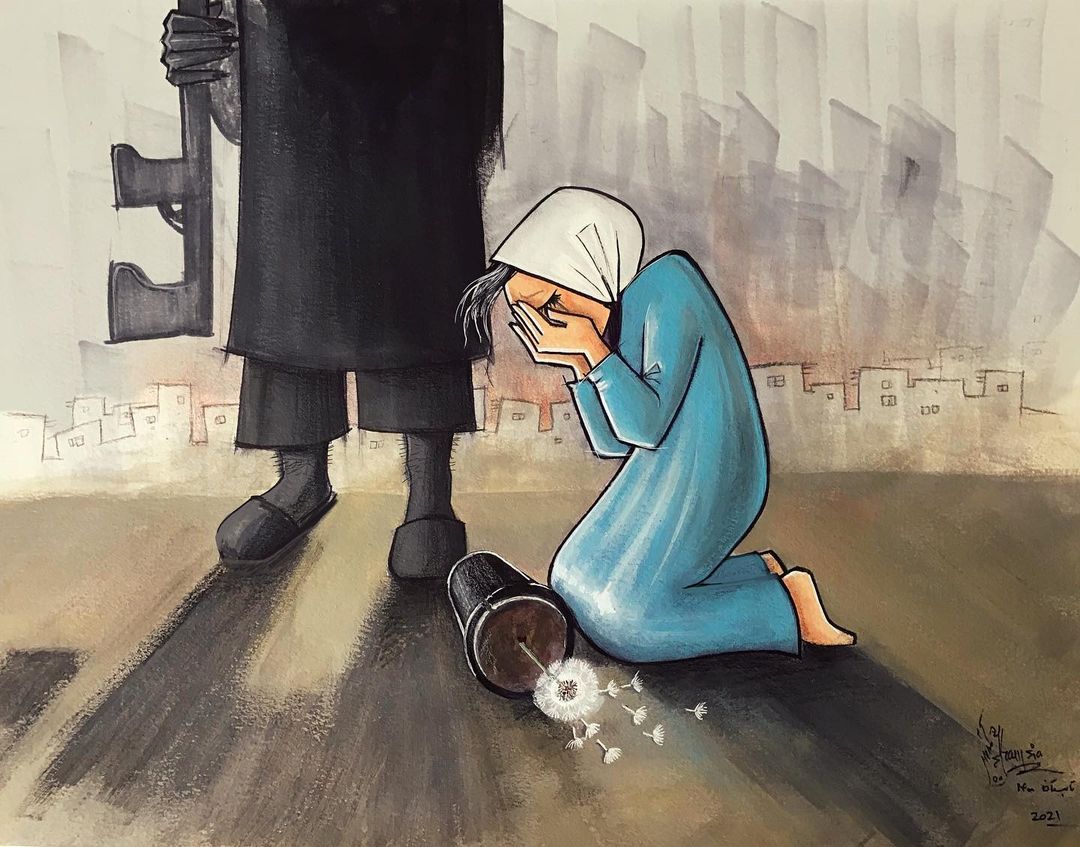
Shamsia Hassani: The Afghan graffiti artist capturing women’s voices.
by Alfredo Mendoza, onNews , August 20, 2021

by Alfredo Mendoza, onNews , August 20, 2021
Shamasia Hamssani reached international success over the last ten years. As the first Afghan female graffiti artist, she aims to promote women’s voices with bold murals and exhibitions in the US, Europe and Asian countries.
She got to be included on the Top 100 Foreign Policy’s global thinkers back in 2014 and was included in Goodnight Stories for Rebel Girls Vol. 2, a best-selling collection of portraits focus on game-changing women.
As the Taliban captured Kabul after the US military abandoned the country last week, Hassani’s boomed on social media. She worked on two powerful pieces showing girls in radiant blue carrying images of hopelessness. The theme of her last graffitis draws the violent repression Afghan women now face with the return of the Taliban.
August 9, 2021
August 14, 2021
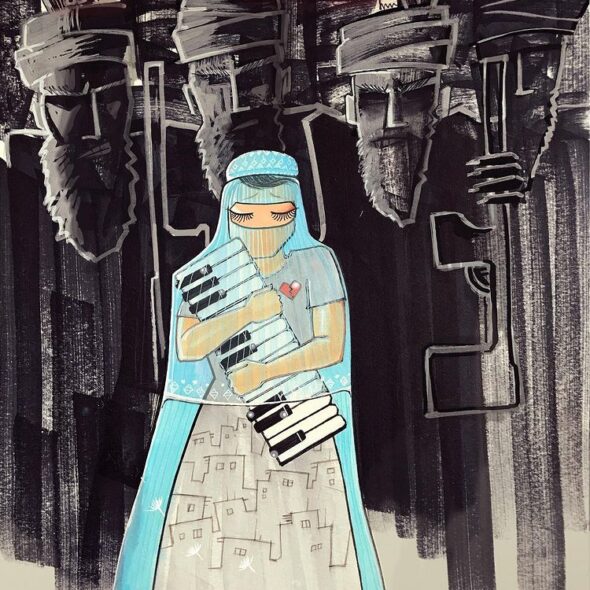
Nightmare | The Taliban rapidly took control of a large part of AfghanistanOriginal post
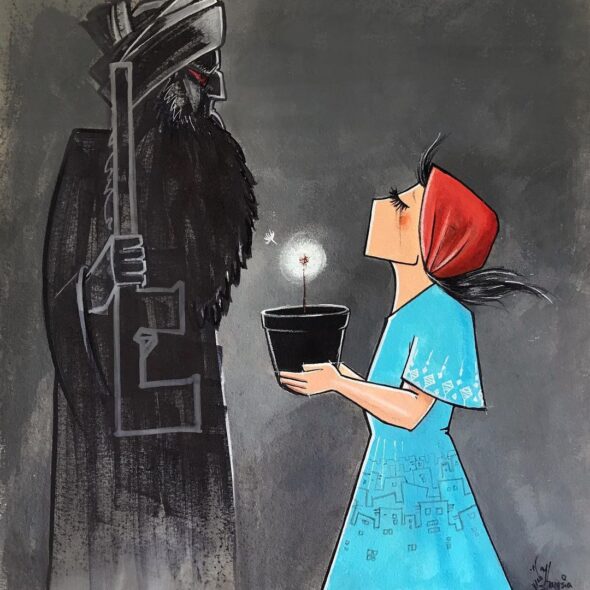
Maybe it is because our wishes have grown in a black pot …Original post
She is a trend on Instagram and Facebook, with tens of thousands of reactions and shares. Hundreds of followers are concerned about Hassani’s safety as she has gained notoriety online. Other female artists have deleted their social media accounts, fearful of the new government’s violent, maybe fatal repercussions.
Nevertheless, she posted the “Death to Darkness” piece on Tuesday, August 17 – confirming that she is safe and will continue to voice the oppressed women in her country.
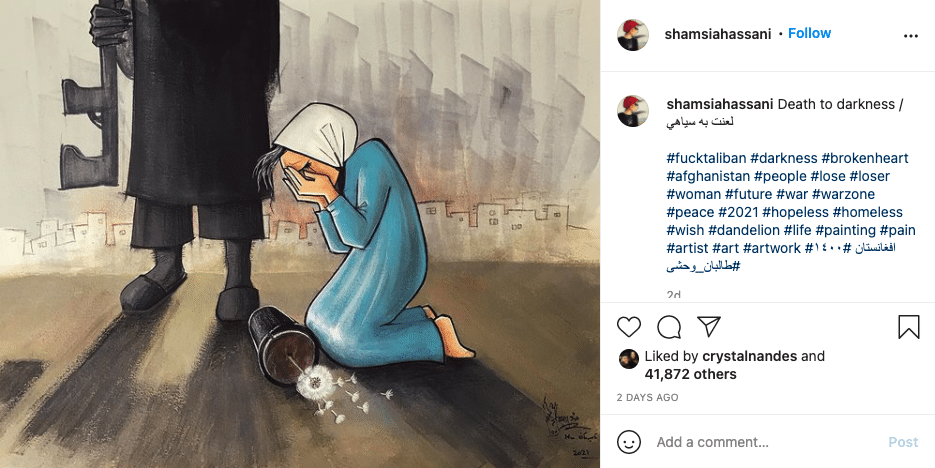
You may also be interested in: Bairnsdale Aboriginal Arts: A graffiti vandalism prevention case study
As most human rights activists believe draconian restrictions and severe punishments are coming with the new regime, publishing this content is a bold move (particularly for women).
Female artists are likely in more danger than men in the creative industry. Doing work that violates the interpretation of Islamic law is a risky way of living.
“Some people think that art is not allowed in Islam, and then they feel that they should stop me … If a lot of closed minds come together, they will be mighty, and they can do anything,” Hassani said in a 2016 video interview for The Creators Project.
https://youtu.be/FsJc8li48Dc
Hassani was born in 1988 in Iran, the daughter of Afghan refugee parents. She returned to Afghanistan to study painting and visual arts in 2005. After completing the degrees, she dived into street art in 2010 to depict the precarious situation of women and girls in her country.
Graffiti gave Hassani the ability to highlight the challenges of women in a male-dominated society publicly. But also, her art embraces the strength and resolution of the oppressed side of the community.
Changing the perception around Afghan women is one of her motivations: “I try to show them bigger than what they are in reality, and modern forms, shaped in happiness, movement, maybe stronger. I try to make people look at them differently”, she said.
Another motivator is that her art responds directly to extremists groups and the Taliban attacks, creating flaming images of pain, grief and loss. One of her most compelling pieces is a composite paint-on-photograph published in November 2020, after the attack at her workplace, Kabul University.
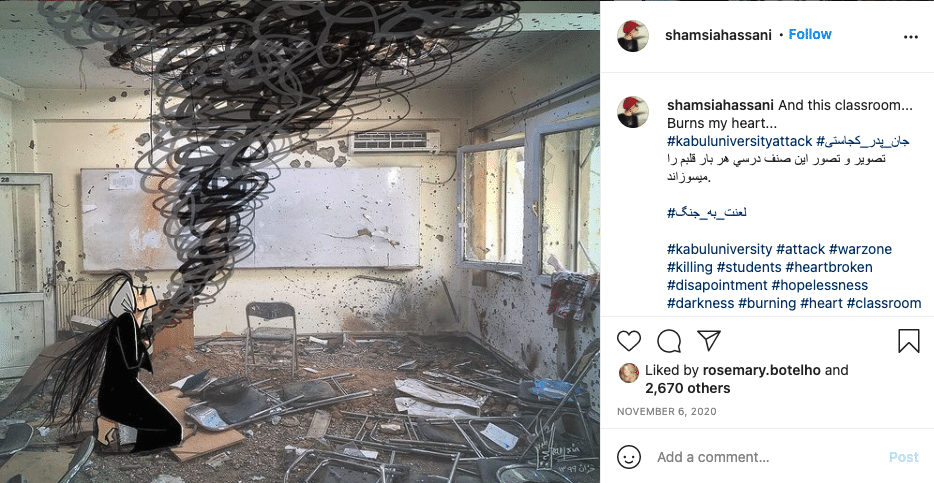
You may also be interested in: Racist coronavirus graffiti in Melbourne
Hassani’s work express a broad spectrum of ambivalent emotions: hope and heat brake, longing and defiance, freedom and fear. Her style tends towards boldly geometric shapes, and shades meld together. The subjects have no mouth and often carry elements of nature or instruments.
“I use them [music instruments] as a symbol for women to play her voice with it. She can use musical instruments to talk with people, to speak louder and [get] more attention, as she has no mouth. But this musical instrument gives her power to speak in society,” Hassani told DW in 2018.
“Her eyes are closed because usually, she has nothing good around herself to see … and sometimes she cannot see her future. And that’s why her eyes are closed, but it doesn’t mean she cannot see,” the Afghan graffiti artist added.
“I am terrified of public spaces. I am really scared of explosions happening all the time. And specifically, it’s difficult for women to do graffiti and street art because usually, people are not happy with women’s activities … all the time I am careful”.
Hassini’s graffiti work in Kabul is composed of small graffiti pieces. She can’t do large murals as the risk is high, and she needs to move quickly. To bypass this challenge, she started to photograph buildings and paint her graffiti over still prints. Her “Dreaming Graffiti” series is composed with this technique only.
Despite rapid success in the artistic world, Hassani has mentioned her feelings of hopelessness and inability to make a difference on social media platforms.
Nevertheless, her art continues to give power and strength to people: “I think that I change people’s minds with my artwork and sharing my ideas with people.”
With her recent images, she is publicizing the plight of women and girls in Afghanistan and helping to ensure they are not forgotten.